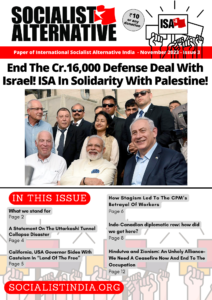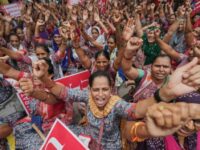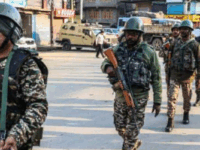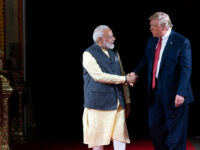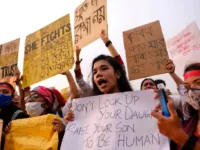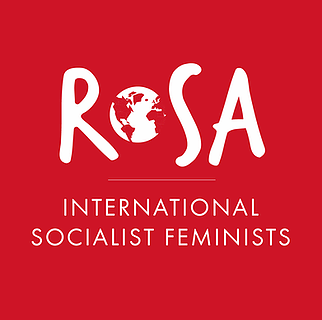Indo-Canadian Diplomatic Row: How Did We Get Here?
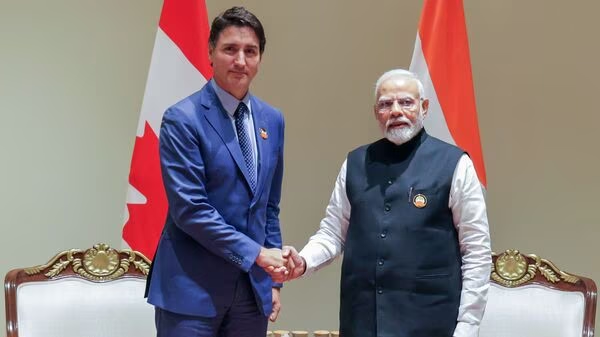
The assassination of Khalistan leader Hardeep Singh Nijjar once again ripped open the festering wound of India’s long-admired yet paradoxically underserved Sikh community, and brought the issues of this community, in particular of the Sikh diaspora in Canada, to the world’s headlines. To Indians, the word Khalistan conjures a dark and distant memory of bomb blasts, beatings, assassinations, and one of the worst crimes of the Indira Gandhi regime, the desecration of the Amritsar Golden Temple in the 1984 operation Blue Star. The assassination of Gandhi and the following communal riots which killed over 10,000 and which influential political and security figures helped instigate, threw the country into further chaos.
The word “Khalistani” has become an epithet the ruling class levels against any Punjabi, let alone Sikh, who dares stand up against the Modi government, as shown in the 2020 Farmer’s Strike. However, in Canada, where almost 8 lakh [800,000] Sikh immigrants and refugees have made their home, in some Sikh communities, Khalistan represents freedom and self-determination, as well as the dream of restoring the greatness of a long-lost golden age. The root of the conflict between India and Canada, like the modern Khalistan movement itself, can largely be placed on the shoulders of the Indira Gandhi regime, and the continuation of her legacy by the Modi government. However, the tensions between them led Canada to become, first passively and then actively, a state party to the Khalistan conflict, a fact that has once again reared its ugly head in the wake of this diplomatic crisis.
The Historical Origin of the Khalistani Movement
The rise of Khalistani movement can be traced back to 1947. The violence of partition was scarcely experienced to greater degree than in Punjab, where the dividing line mutilated the province, forcing the diverse peoples (Sikhs, Sindhis) to choose between two religions that neither of them belonged to. The Akali Dal (mainstream Sikh nationalist party) post-independence demanded for the creation of a separate province for the Punjabis (primarily the Sikh community), but the Congress government rejected the demand, fearing that creation of a state solely for Sikhs might give rise to a partition based on religion. However, due to continued violent protests the government was forced to accept the demand, but trifurcated the erstwhile Punjab province based on language—Punjabi language majority Punjab, Hindi speaking majority Haryana and Himachal Pradesh and the union territory of Chandigarh. However, this did not resolve the resentment as not only was Punjab forced to share water resources (water of Beas and Sutlej rivers) with the other newly created states, but also Punjab and Haryana were made responsible for the food production of the entire country after the introduction of Green Revolution in India. Furthermore, the Jats including the Jat Sikhs of Haryana didn’t profit as much from the introduction of the Green Revolution as Punjabi Sikhs. This further created factionalism among the Sikh leadership. Moreover, the central government’s refusal to officially recognize Sikhism as a separate religion from Hinduism was another important bone of contention.
The Congress, in order to weaken the support for the Akali Dal, supported J.S. Bhindranwale behind the scenes as a Sikh opposition to the moderate Sikh Akali Dal. The Congress’s decision to support a sant (religious leader) was viewed as ingenious. Jarnail Singh Bhindranwale was presented as an apolitical religious leader whose fiery speeches resonated with the Sikhs specially the Jat Sikh community and the conservative Sikhs. What the Congress did not predict is that he was going to unleash a reign of terror in Punjab which would claim thousands of lives.
J.S. Bhindranwale, Congress and Khalistani Movement post 1980
The economic inequality among the Sikh community in Punjab and Haryana itself was at its highest during this era following the introduction of the Green revolution in farming. Financial stability was based on the quality and quantity of land ownership. Consequently, there was a growing unrest among the rural Sikh community about the lack of job opportunity, development and rampant poverty. Bhindranwale’s demands of a separate homeland and promise of implementing Sikhism as the state religion of the proposed homeland attracted the youth and helped weaken the hold of the Akali Dal. The Congress in the build up to 1984 operation Blue Star, had multiple opportunities to discipline and check the rise of Bhindranwale but on each step they refused. Most prominent was in April 1980 when the Congress Home Minister, Giani Zail Singh, openly supported him in parliament stating that Bhindranwale had nothing to do with the murder of the Nirankari Sikh religious leader Gurbachan Singh (1) allowing Bhindranwale to continue his reign of terror. Following this, Bhindranwale and the Akali Dal joined hands in 1982 in order to counter the Congress government in Punjab. Bhindranwale not only organized multiple assassination of Hindus but also of other sects of Sikhism like Nirankaris. The central government found the opportunity it needed when another fresh spate of murders occurred in October 1983, and emergency rule was imposed in Punjab.
Bhindranwale took shelter in the Golden Temple, one of the holiest sites for Sikhs, on 15th December 1983 and started running a parallel government, converting the place of worship to a fortress. The Congress government did not take any preventive action in spite of knowing of his continued fortification of the Golden Temple until June 1984, when on Indira Gandhi’s order Operation Blue Star was launched. Though the government argues that it was provoked into attacking the Golden Temple by Bhindranwale’s militancy, Gandhi’s former secretary P.C. Alexander argued that the main cause of the attack was the 1984 bandh which threatened the central government’s access to grain and tax revenue. Conversations between Akali Dal leaders, Bhindranwale and Army officers leading up to the attack indicated that diplomatic resources had not been exhausted.
The army’s decision to storm the Golden Temple on the day that commemorated the martyrdom of the Fifth Sikh Guru Arjan Dev can’t be a mere coincidence. It is common knowledge that Sikh pilgrims throng the temple to commemorate the day. It was a cold hearted, calculated decision of the Government to launch the operation on the specific day in order to inflict maximum damage, to terrorize the community and quell any possibility of a movement. According to government records 493 people were killed, consisting of militants and civilians, though eyewitnesses put the number at around 5,000-10,000 who were almost entirely civilians. Following Operation Blue Star, Indira Gandhi herself was assassinated by her two Sikh bodyguards in New Delhi in Oct, 1984. After Indira Gandhi’s assassination, communal riots broke out across New Delhi and in the surrounding states of Punjab and Haryana. More than 8,000 Sikhs were killed, tortured and raped in the ensuring violence. Not surprisingly, the Congress party workers and the New Delhi police played an important part in inciting the riot. Many Congress leaders paid bribes in cash and liquor to rioters, and provided voter lists of Sikh members as well as kerosene for burning Sikh businesses, homes, and people. For years, the complicity of the Congress and of the police in these massacres were covered up.
Khalistani Movement Post the 1984 Operation Blue Star and Anti-Sikh Riot
It is only after the Operation Blue star and the anti-Sikh riots that the Khalistani movement gained momentum. Before 1984 there was not widespread support, but post-riot the Sikh community felt justified in demanding a separate homeland, considering the Government’s hostile attitude towards the Sikh community. The 1984 anti-Sikh riot was a pogrom, plain and simple. From 1984 to mid 1990s, human rights abuses and targeted assassinations were committed by both the Khalistani groups and the Indian government, leading to the killing of over 21,000 people, the majority of whom were Sikh. Police encounters (extrajudicial killings) were almost a daily occurrence in Punjab. Furthermore, the Sikhs were disheartened when Congress leaders responsible for the riots were appointed to important government positions, while Sikh diplomats and politicians were sidelined as an unwritten government policy of the Rajiv Gandhi government. The government continued their discriminatory policy towards the Punjabi and Haryanvi Sikh communities and left them for dead. No “Marshall Plan” emerged for the destroyed and impoverished region, devastated by the operation, decades of neglect, and Bhindranwale’s reign of terror. The government disregarded the Sikhs distinct cultural and religious identity by lumping them with Hindus and desecrating one of the holiest places in Sikhism on one of the holiest days. It is outrageous that just because Guru Nanak was born a Hindu, that it can be treated as a sect of Hinduism. While the region still continues to feed the country, gang related crimes, drug abuse and lack of industrial development continued in Punjab and Haryana. Hence, it was natural that the Sikh community felt vulnerable and alienated. One should not forget that for many of the victims of the 1984 riots and consequent police atrocities, this was like the opening up of an old wound. It was only 30 years back in 1947 in the mayhem of the partition that tens of thousands of Punjabis, mostly Sikhs, were killed, tortured, raped and forced to immigrate to India with almost nothing.
Canada’s Tolerance of Militant Khalistani Separatists
With the rise of Sikh militancy and of the persecution of Sikhs within India, there was a rise in the rate of immigration to the West, primarily Canada. It is important to note that Indira Gandhi’s own officer G.B.S. Sidhu attested that, as an R&AW (Research and Analysis Wing of the Indian External Intelligence Agency) officer stationed in Canada in 1976 reported that there was no Khalistani movement to speak of at that time. Before 1980 Canada had a meager Indian diaspora of 35 thousand, which according to the 2021 census rose to 1.4 million of which 777,000 are from the Sikh community. The immigration to Canada was fueled by lack of economic development and social instability in Punjab. Furthermore, besides Khalistani militant leaders, Punjabi youth also escaped to Canada to evade state repression. After the 1974 nuclear test, relationships deteriorated, leading to Canada’s severing of bilateral nuclear cooperation. Post 1974, Indo-Canadian relations were at their lowest point as Canadian government officials saw the Indian nuclear test as a violation of their good faith in providing nuclear energy technology. Consequently, it is not surprising that Canada had very early on decided to adopt an indifferent position with respect to any sort of Khalistani movement in Canada. The Canadian government refused to take any action against Khalistani militants residing in Canada, some of whom already had criminal cases registered in India.(2) As a matter of fact, in 1982 Indira Gandhi had implored the Pierre Trudeau (father of Justin Trudeau) government to take action against Khalistani extremist leaders. Gandhi requested the extradition of Talwainder Singh Parmar, a known Khalistani militant leader, to India. However, the Pierre Trudeau government refused it on the basis of a ridiculous technicality, arguing that India’s recognition of the Queen as head of the Commonwealth but not head of state was “insufficiently deferential” and therefore the extradition protocols were non-binding.(3) The Trudeau government’s reckless indifference to Khalistani right-wing extremism set the stage for the 1985 Air India bombing. The bombing took the lives of 329 people among which 268 passengers were Canadian citizens, mostly of Indian origin belonging from Punjab.
This tragedy, the largest plane-related terrorist attack in history before 9/11, was entirely preventable. The Canadian security forces were dismissive, despite multiple warnings including information provided by informants (4), of the probability of an attack on Air India flight and the Indian High Commissioner’s repeated request to take the threat seriously. The government did the bare minimum like putting Parmar under surveillance. However, the little action they did take was not diligently followed-up on. There was a serious lapse in security at both Toronto and Montreal airport.(5) Astonishingly, Talwinder Parmar, the mastermind behind the Air India bombing, continued traveling freely internationally and crossing the border illegally from Pakistan into India till his death in 1992 at the hands of Indian police.(6) Would the Canadian government’s response have been different if the passengers were primarily white Canadians or the airline targeted was a European or American airline? The victims and their families certainly felt a strong sense of racist contempt in the indifference displayed by the Canadian government in the treatment of this affair. “Canadian government officials did not seem to care at all”, said Susheel Gupta, who lost his mother in the bombing. “This was not their tragedy to deal with, but India’s. Didn’t matter that we were Canadian citizens”.(7)
The 1985 Air India bombing investigation concluded in 2005 with the conviction of Inderjit Singh Reyat on charges of manslaughter and imprisonment for 5 years. The 2005 trial not only pointed out the bungled investigation by the CSIS (Canadian Security Intelligence Services) and RCMP (Royal Canadian Mounted Police) at multiple stages but also their incompetence in performing their duty before the 1985 bombing. Justice Mark McEwan in 2010 while delivering judgment on Reyat who was then charged with perjury and sentenced to 10 additional years, observed that though the trial had come to an end, justice had not been served, and nor was Reyat remorseful for his actions.(8) It is clear that the Canadian government’s interest was not in serving justice but rather to minimize the disgrace of the incident as it affected their reputation among the imperialist nations.
Both the Indian government and the Canadian government did not support a fair investigation. It felt like that the Canadian government was in a hurry to somehow close this investigation and move on so that they don’t have to crack down on the Khalistani extremist elements which might result in them losing support of some of the pro-Khalistani organization and leadership whose support, they think, is important to garner votes within the Sikh diaspora. On the other hand, the Indian government was in a hurry to close this chapter proving the involvement of the Khalistani extremists in the Air India bombing. This allowed the government to cement the narrative of Khalistani leaders as terrorists and close the door on the shameful anti-Sikh riots of 1984. As we mentioned in the article about the Gaza siege, while the actions of these individuals and organizations are clearly terrorism, this same definition clearly applies to the Indian ruling class which has repressed and massacred Sikhs on a purely religious basis.
The Canadian government’s stonewalling of India’s requests for extradition of individuals accused in narcotics, human trafficking and gang activities, serves as a convenient excuse for a commando operation. Indeed, it is a fact that Canada does harbor gangsters who have ordered targeted killings in India and internationally. The most prominent and recent one was the assassination of the popular rapper Sidhu Moose Wala in 2022 in Punjab which was organized by Canadian based Punjabi gangster Goldy Brar.(9) At the same time organizations like Sikhs For Justice, who ran a campaign at the time of the assassination titled “Kill India,” have openly encouraged communal violence against Hindus. In a video released by the organization, Gurpatwant Singh Pannu, president of Sikhs For Justice, can be seen making threats of violence against Hindus of Indian origin and demanding they leave Canada.(10) Hindu temples have been desecrated, a $100,000 reward was offered for the citizen’s arrest of diplomat Sanjay Varma (11), and a $10,000 reward for the addresses of Indian diplomats.(12) He even warned Sikhs not to fly Air India on the 19th of November last year, as their lives might be in danger, implying that there would be another aircraft attack like in 1985.(13) While there was no attack, and his threat was clearly just posturing, he has shown a willingness to engage in rhetoric and practices that would alienate ordinary Sikhs and undoubtedly endanger many more. The Canadian government for its part has no interest in the welfare of Sikh people, only in opportunistically profiteering from the wealthy landlords, stewards of Gurdwaras and other prominent Sikhs who use their money to buy influence in the government. However, it is also clear that India’s ruling class has no loyalty to the Punjabi working class, and the allegations of extrajudicial killing must be taken seriously. The evidence that Trudeau has attested to must be brought into daylight.
Conclusion
The Indian government across multiple generations has used the Khalistani movement to discredit any and all Sikh activism. Neither the Indian government nor the Canadian government care about the working class Sikhs. While the Indian government continues their chest beating about how Sikhs are an integral part of India, their actions show otherwise. The continuous exodus of young people from Punjab to the West, primarily Canada, in search of better life and opportunity, highlights that there has not been much economic or infrastructure development. Gang crimes and drug abuse is still rampant in Punjab while Canada continues providing safe harbor to these criminals.
Rather than tackle the cause of discontent in the diaspora community, the Indian government has decided to use Mossad-style tactics against the Khalistan movement. The targeting of Nijjar along with Sikhs For Justice leader Gurpatwant Singh Pannu and others is intended to inflame the conflict and provoke more violence. As in the case of the 1980’s, an escalation of violence and polarization is beneficial for both the Modi regime and the Khalistani leadership. Regardless of Nijjar’s affiliation with the Khalistan Tiger Force, the Sikh community in Canada have interpreted this assassination as an attack on their community. The trauma of 1984 still haunts many, especially considering that many Sikh immigrants to Canada were refugees in the wake of the persecution of Sikhs, and the assassination of Nijjar purposefully has inflamed this trauma. We stand with the Sikh community against Hindutva chauvinism and condemn the violation of Nijjar’s human rights in this extrajudicial killing.
While acknowledging this, we also caution against a knee-jerk reaction to jump behind the Khalistan camp from the Left. Sikhs For Justice plans to stage a worldwide referendum, coincident with the Canadian election, on establishing a Khalistan whose borders include not only Punjab, but also the entirety of Haryana, New Delhi, and Himachal Pradesh as well as sections of Uttar Pradesh, Uttarakhand and Rajasthan. This demand goes far beyond establishing a homeland in majority Sikh-populated areas, rather seeking to recreate the empire of Sikh Maharaja Ranjit Singh’s 19th century kingdom. ISA has and will always stand with the oppressed and the stateless in their struggle for self-determination. However, even the specifics of borders notwithstanding, such a decision must be considered within the context of the fact that over 90% of all Sikhs live in India. The legitimate grievances of the Punjabi community should be acknowledged and advocated for, but in the context that the vast majority of the community rejects the Khalistan demand. Justice must be served to all–the long-suffering Sikh community which, through its toil, struggles and sacrifices, has done so much to shape Indian and Canadian societies alike, as well as the victims of terror both by the Indian government and Khalistani extremists. Yet a just and lasting peace will never be achievable as long as imperialist rivalry pits workers against each other.
Socialists defend the right to self-determination, where people decide their own fate. National rights without social rights are an empty shell. The people of Punjab, India or the diaspora should not trust capitalist politicians and their governments that defend the interests of big business at the expense of the majority of the population. Movements purely out of communal tensions and violence are not a way forward either. Working people and poor farmers must take control of their own destiny and fight for a socialist society. In this struggle, we are stronger on the basis of respect for each other’s religious and national uniqueness. It is also through this struggle that real liberation can be achieved.
No faith in imperialist governments, only in the working class!
- Sidhu, G.B.S. “The Khalisthan Conspiracy.” pg. 47, HarperCollins 2020.
- https://www.cbc.ca/news/canada/i-warned-rcmp-days-before-air-india-disaster-bartleman-1.665529
- https://www.opindia.com/2023/09/canadian-pm-trudeau-openly-suphow-justin-trudeau-father-pierre-trudeau-had-shielded-kanishka-bombing-mastermind-talwinder-parmar/
- https://www.newindianexpress.com/magazine/2023/sep/24/khalistan-the-canadian-connection-2617037.html
- https://www.thecanadianencyclopedia.ca/en/article/air-india-flight-182-bombing, https://www.cbc.ca/news/canada/i-warned-rcmp-days-before-air-india-disaster-bartleman-1.665529
- https://www.cbc.ca/news/canada/british-columbia/air-india-bombing-timeline-1.6520841, https://www.babushahi.com/full-news.php?id=108101
- https://www.cbc.ca/news/canada/british-columbia/air-india-bomber-gets-9-years-for-perjury-1.1049335
- https://www.ndtv.com/india-news/9-separatist-outfits-supporting-terror-groups-have-bases-in-canada-indias-deportation-requests-ignored-officials-4404779
- https://www.youtube.com/watch?v=3hk_L3rqYCw, https://www.indiatimes.com/news/india/sfj-chief-gurpatwant-singh-pannun-resurfaces-in-new-video-threatening-indian-diplomats-608310.html
- https://www.msn.com/en-us/news/India/khalistani-separatist-announces-100-000-reward-for-citizen-s-arrest-of-indian-envoy-in-canada/ar-AA1jPc69
- https://www.msn.com/en-in/news/India/khalistani-group-issues-8-lakhs-reward-for-information-of-indian-diplomat-in-canada/ar-AA1eZou7
- (video included) https://www.indiatvnews.com/news/world/khalistani-terrorist-gurpatwant-singh-pannun-threatens-to-blow-up-air-india-flight-on-november-19-kanishka-bombing-1985-indian-govt-sikh-for-justice-2023-11-04-901208
- https://www.cbc.ca/news/canada/british-columbia/khalistan-referendum-surrey-bc-1.6960101
